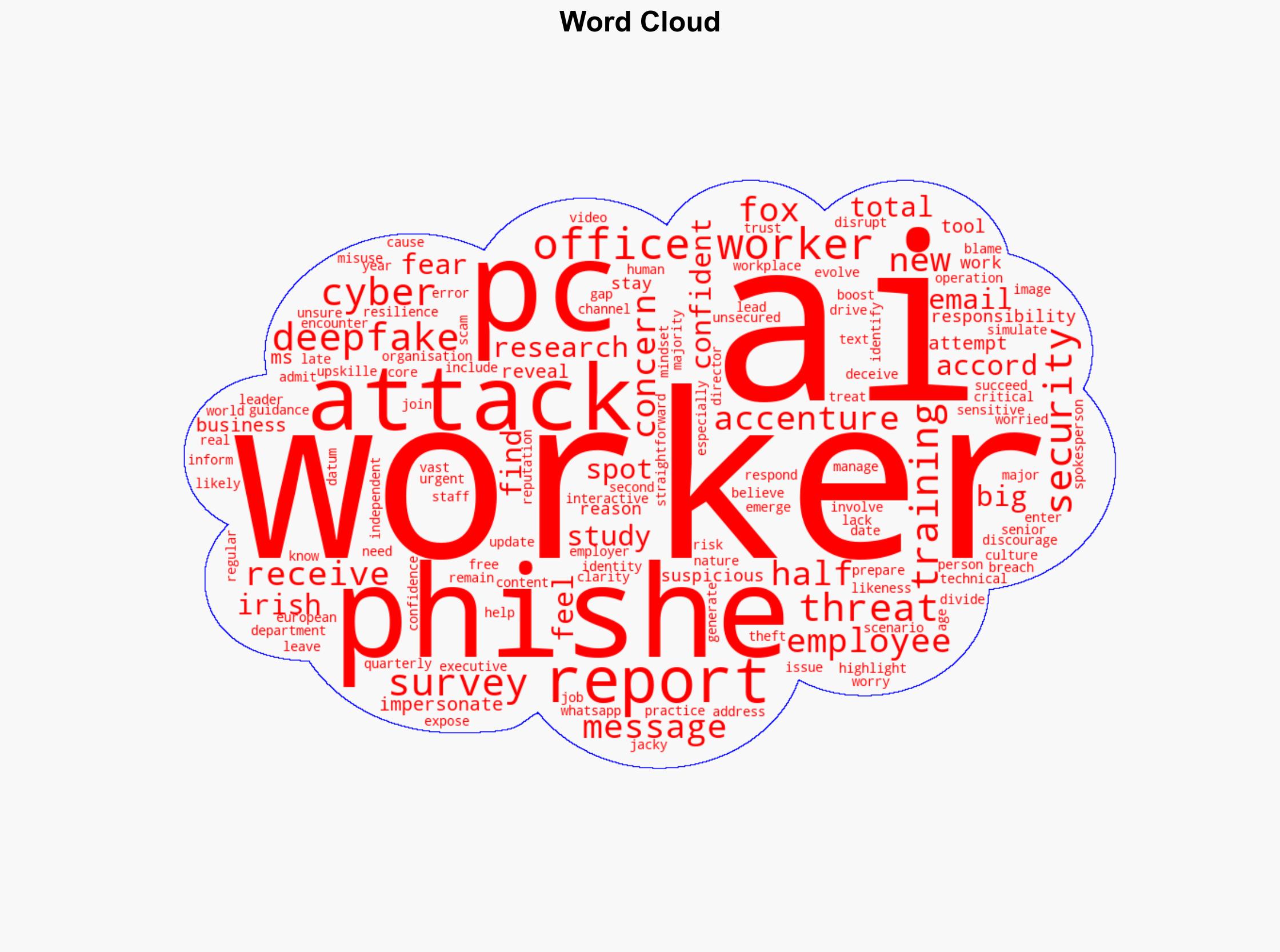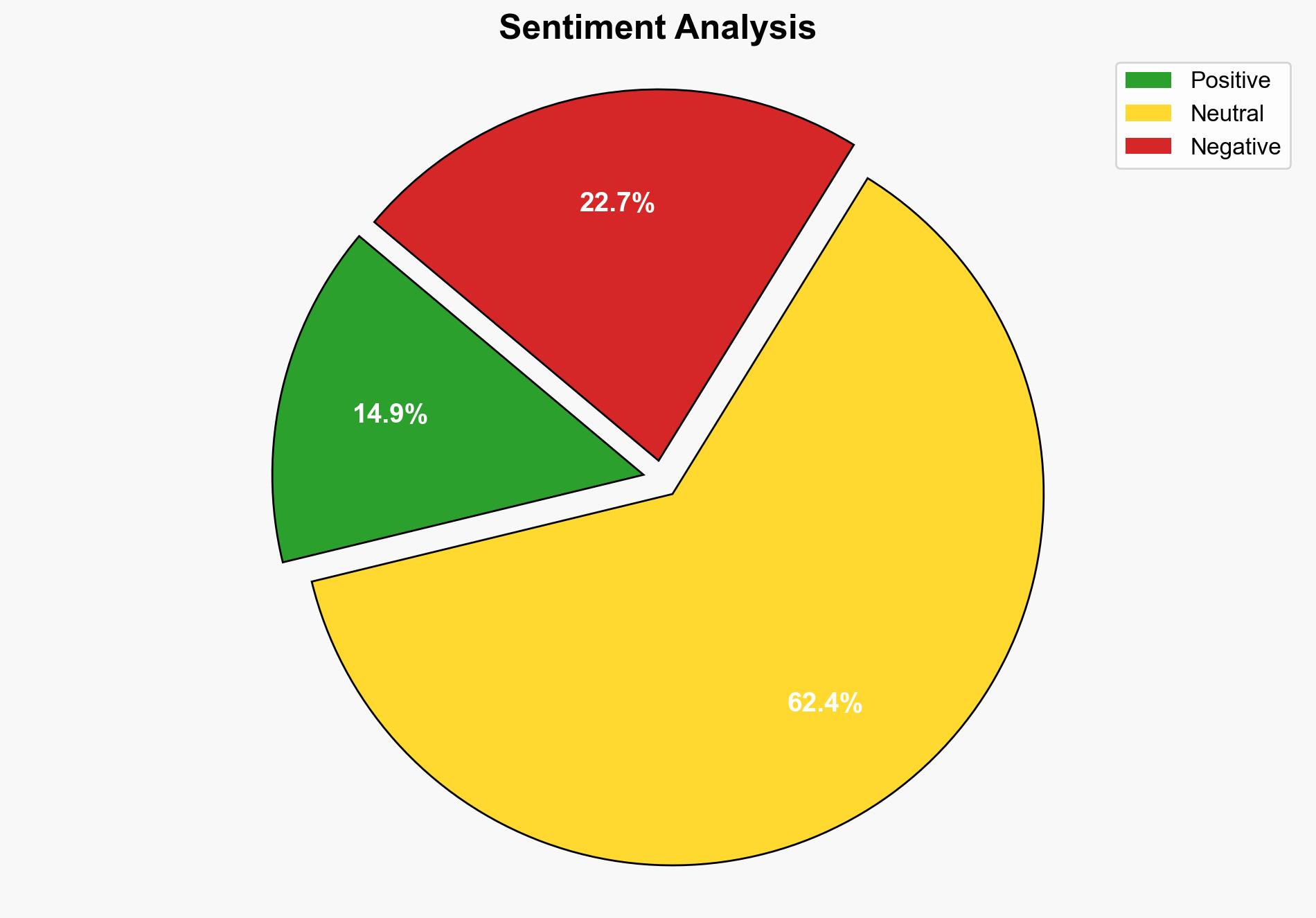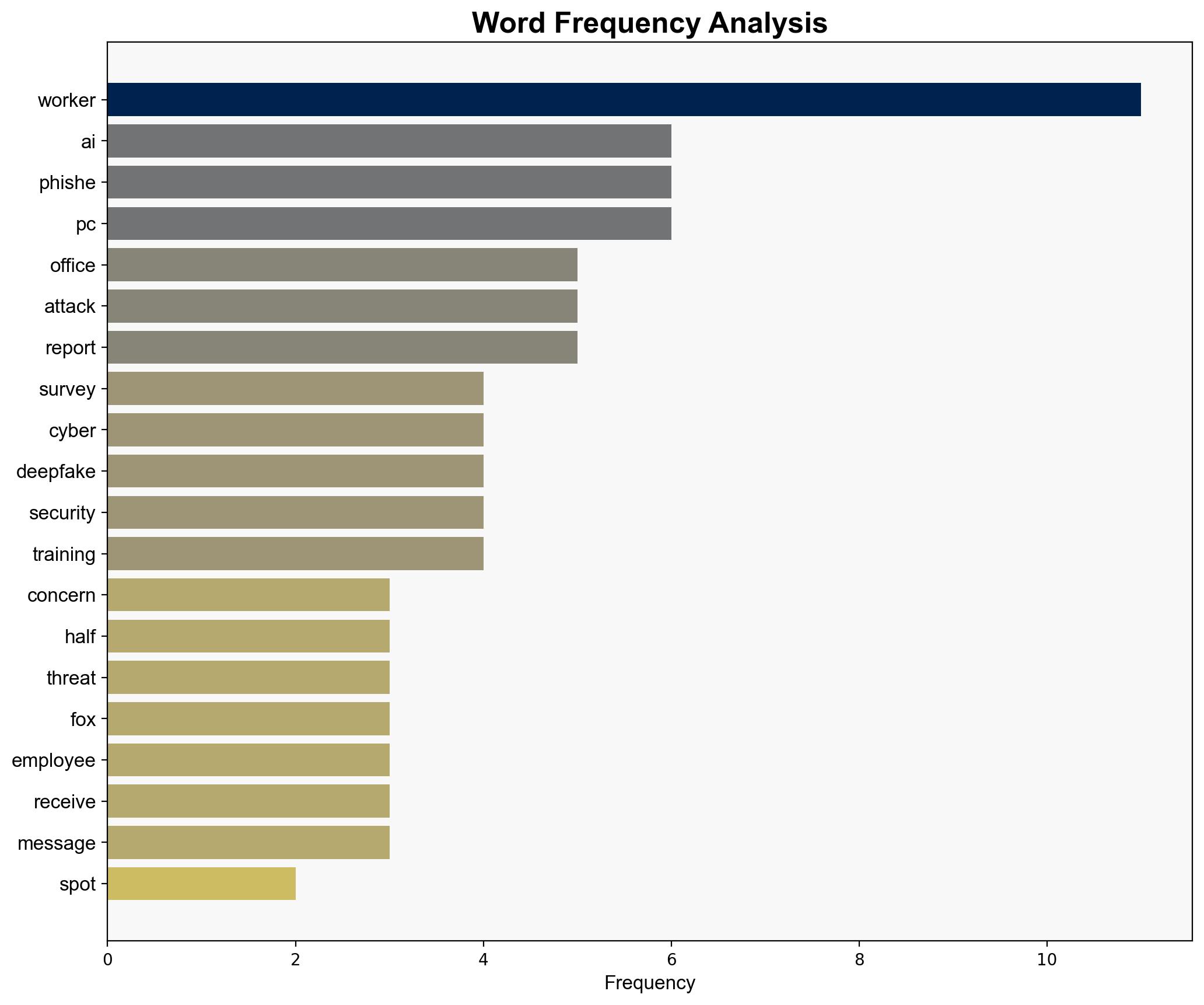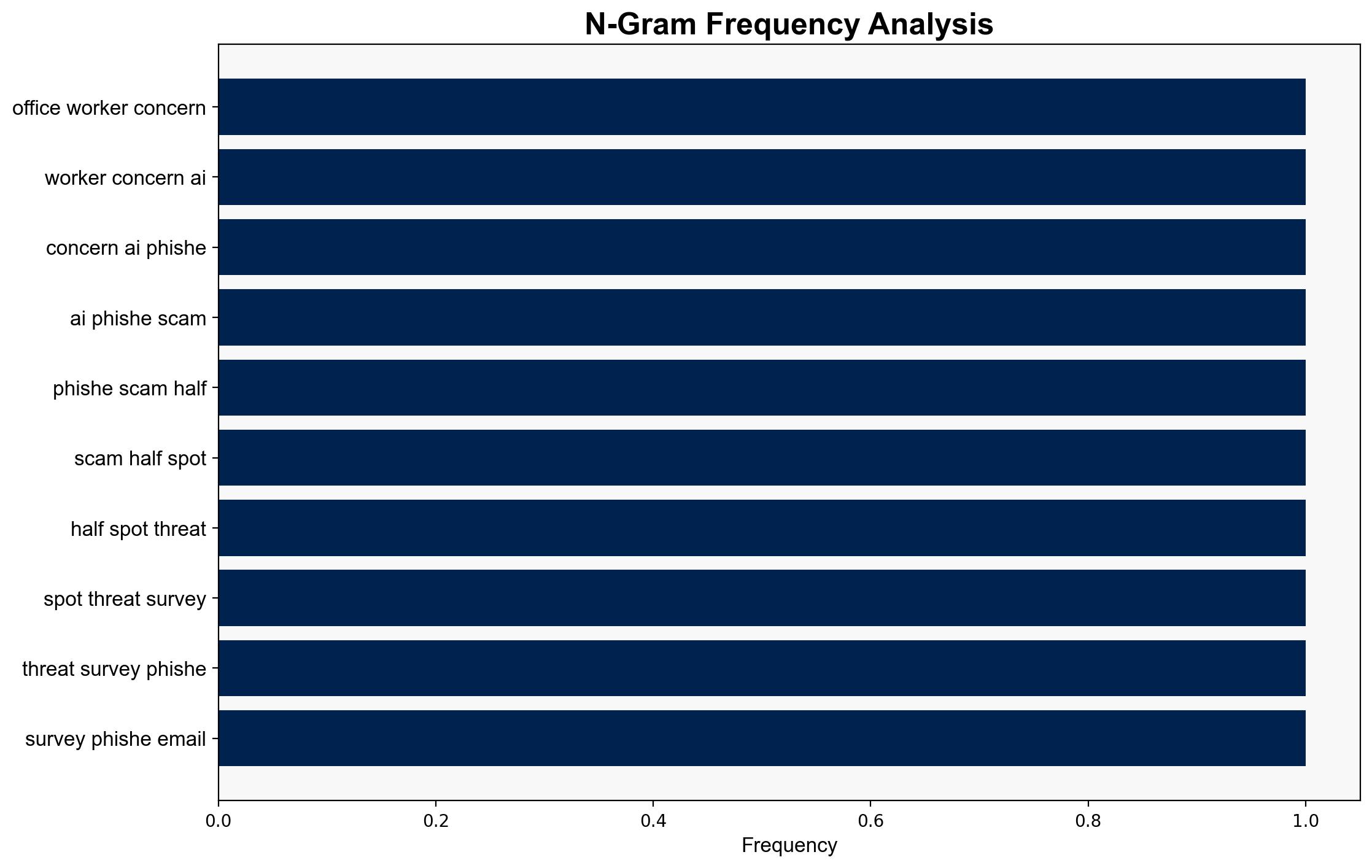Office workers most concerned about AI phishing scams but only half say they would spot threat survey shows – Independent.ie
Published on: 2025-10-21
Intelligence Report: Office workers most concerned about AI phishing scams but only half say they would spot threat survey shows – Independent.ie
1. BLUF (Bottom Line Up Front)
The strategic judgment indicates a moderate confidence level that the primary concern among office workers is the evolving nature of AI-driven cyber threats, particularly phishing scams. The most supported hypothesis suggests that inadequate training and awareness are the primary reasons for the low confidence in identifying such threats. It is recommended that organizations enhance their cybersecurity training programs, focusing on AI-related threats to improve resilience.
2. Competing Hypotheses
1. **Hypothesis A**: The primary reason office workers lack confidence in spotting AI-driven phishing scams is due to insufficient cybersecurity training and awareness programs.
2. **Hypothesis B**: The complexity and sophistication of AI-generated phishing scams have outpaced current detection capabilities, making it inherently difficult for workers to identify them, regardless of training.
Using ACH 2.0, Hypothesis A is better supported by the data, as the survey highlights a significant gap in training and awareness, with many workers admitting to entering sensitive data into unsecured AI tools. Hypothesis B, while plausible, lacks direct evidence from the survey indicating that the sophistication of scams is the primary barrier.
3. Key Assumptions and Red Flags
– **Assumptions**: It is assumed that improved training will directly correlate with increased confidence and detection capability. Another assumption is that the current training methods are not effectively addressing AI-specific threats.
– **Red Flags**: The survey data may not fully capture the diversity of phishing techniques or the varying levels of sophistication across different sectors. There is also a potential bias in self-reported confidence levels.
4. Implications and Strategic Risks
The evolving nature of AI-driven cyber threats poses significant risks to organizational operations, reputation, and trust. Failure to address these gaps could lead to increased incidents of identity theft and data breaches. The psychological impact on employees, including fear of blame, may further discourage reporting and proactive defense measures.
5. Recommendations and Outlook
- Enhance cybersecurity training programs with a focus on AI-related threats, incorporating interactive simulations and regular updates on emerging risks.
- Develop clear reporting protocols to encourage reporting of suspicious activities without fear of blame.
- Scenario Projections:
- **Best Case**: Comprehensive training and awareness programs significantly reduce successful phishing attempts.
- **Worst Case**: Continued lack of awareness leads to a major data breach, causing severe reputational damage.
- **Most Likely**: Incremental improvements in training lead to gradual increases in detection and reporting rates.
6. Key Individuals and Entities
– Jacky Fox, Accenture’s European Security Practice
7. Thematic Tags
national security threats, cybersecurity, AI-driven threats, organizational resilience





